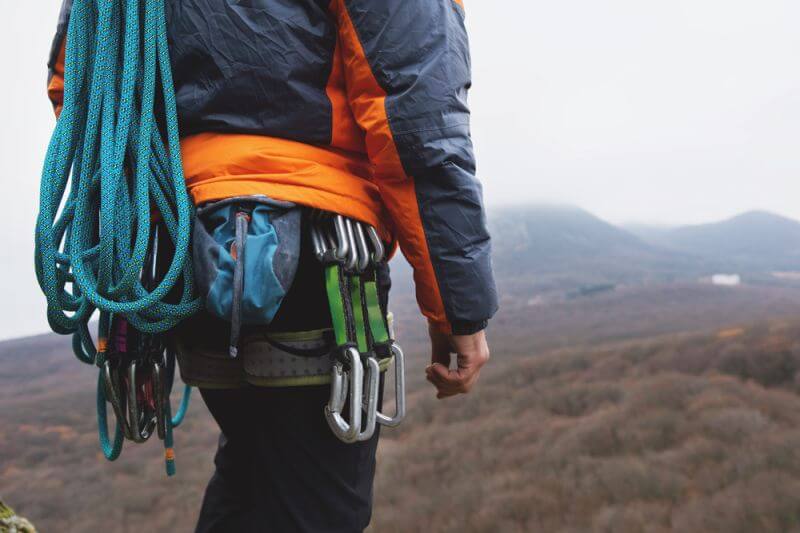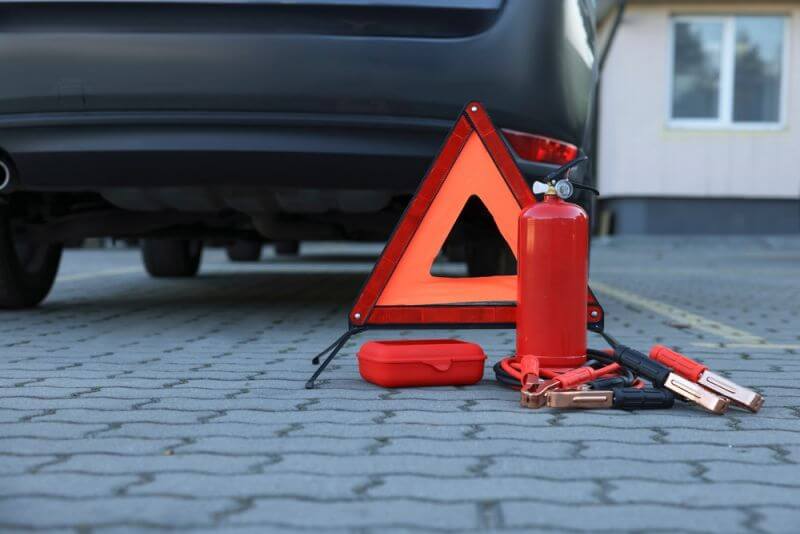In a SHTF scenario where fierce competition for resources is expected, those who maintain a low profile will likely have the upper hand. However, firearms are not ideal for staying under the radar due to their noise. Therefore, switching to quieter alternatives is essential.
Fortunately, there are several alternatives that can effectively do the job without attracting unwanted attention. Here are some weapons that can be employed when silence is necessary:
Bows
Bows have long been prized for their ability to enable hunters to strike with stealth and precision. Their design’s elegance lies in simplicity: drawing back the bowstring stores energy in the flexible limbs of the bow. Releasing the string transfers this energy to the arrow, propelling it quietly and efficiently toward its target. This makes bows an ideal choice for those needing to take down prey without drawing attention.
There are three main categories of bows to consider:
Longbows
These are the most traditional type, known for their simple, straight design. Typically as tall as the archer, they feature a classic D-shaped curve when strung. Longbows are favored for their smooth draw and quiet release, appealing to enthusiasts of traditional archery. However, mastering longbows requires more strength and skill due to the absence of additional mechanisms to aid the draw.
Recurve Bows
Recognizable by their tips curving away from the archer when unstrung, recurve bows store more energy and deliver more power compared to longbows of similar size. This design allows for a shorter, more maneuverable bow without sacrificing power, making them popular in target archery and Olympic competitions. Recurve bows offer a balanced blend of traditional and modern bow designs.
Compound Bows
Modern compound bows utilize a system of pulleys and cables to ease drawing while storing substantial energy. This design feature includes a let-off, allowing the user to hold the bow at full draw with less effort, enhancing accuracy during aiming. Compound bows are highly adjustable and customizable, making them favored for hunting and competitive shooting due to their precision and power.
Compound bows are particularly favored for ease of use. The system of pulleys and cables reduces the effort required to draw the bow, which is advantageous for beginners. The let-off feature enables archers to maintain full draw with minimal effort, affording them more time to aim accurately. Adjustable draw weight and length further enhance comfort and accessibility, making compound bows suitable for those new to archery.
Crossbows
Crossbows are my preferred choice for silent weapons, and over the years, I’ve explored various crossbow styles. These unique weapons combine elements of traditional bows and firearms, designed for ease of use and precision, making them popular in hunting and target shooting.
When it comes to crossbows, several categories exist, each with unique designs and specifications:
Recurve Crossbows
Similar to recurve bows, these crossbows have limbs that curve away from the shooter. This design allows for a smoother draw and quieter shot. They are easier to maintain due to fewer moving parts, lighter in weight, and generally easier to handle. Recurve crossbows are suitable for both beginners and experienced users, commonly used in target shooting and hunting.
Compound Crossbows
These crossbows utilize a system of pulleys and cables to store more energy, resulting in a more powerful shot. The design allows for a compact and efficient structure. Compound crossbows offer higher power and speed with less effort required to draw the string. The let-off mechanism makes it easier to hold the string in the cocked position, enhancing accuracy and efficiency. They are preferred for hunting due to their power and precision.
Pistol Crossbows
Smaller and more compact than traditional crossbows, pistol crossbows are handheld and resemble a pistol in size and shape. They are lightweight and easy to carry, ideal for close-range shooting and small game hunting. Pistol crossbows are primarily used for recreational shooting and small game hunting, and can also serve as a form of self-defense in certain situations.
Rifle Crossbows
Resembling rifles, these crossbows often feature a stock and scope for improved accuracy. They are typically more powerful with a higher draw weight, designed for long-range shooting and hunting large game. The rifle-like design provides better stability and control, making them suitable for novice crossbow users seeking precision and power.
Repeating Crossbows
Equipped with a magazine that holds multiple bolts, repeating crossbows allow for rapid consecutive shots without manually reloading each time. They offer a faster rate of fire compared to traditional crossbows, convenient for scenarios requiring quick follow-up shots. Repeating crossbows are popular in recreational shooting and certain hunting situations.
Reverse Draw Crossbows
In these crossbows, the limbs face forward, opposite to traditional designs. This configuration provides a more centered balance and longer power stroke, resulting in increased power and speed. Reverse draw crossbows are balanced and stable, reducing fatigue during extended use. They are favored by hunters and target shooters for their high performance and accuracy.
Personally, I own two pistol crossbows and one recurve crossbow. I am also planning to acquire a rifle crossbow in the future, such as the Ravin R29X.
Spears
Spears are another alternative worth considering, though mastering this weapon requires extensive training. They are primarily recommended for hunting and fishing, and some argue they may serve as a self-defense weapon. While spears have historical use in warfare, compared to other weapons listed in this article, there are generally better alternatives available.
Among spears, throwing spears (javelins) are commonly recommended for hunting and warfare. They are lightweight and streamlined, making them easier to handle for beginners. Their simple design reduces the number of components to master and requires less strength and endurance to use effectively. This accessibility makes throwing spears suitable for a broader range of people, including those lacking significant upper body strength.
Slingshots
Slingshots, often celebrated for their simplicity and effectiveness as projectile weapons, are categorized into several types, each serving specific purposes. Personally, I possess various types of slingshots and have developed proficiency in their use. During my solo camping trips, I enjoy engaging in target shooting with my slingshot, including the round, pocket-sized varieties.
Here are the categories of slingshots tailored for different uses:
Traditional slingshots
These typically feature a Y-shaped frame with rubber bands or surgical tubing attached to the tips. Users pull back on a pouch to launch small projectiles. Traditional slingshots are easy to use, cost-effective, and simple to make or acquire, making them ideal for beginners and recreational purposes.
Wrist-braced slingshots
Similar to traditional slingshots but with an additional brace extending from the handle to the wrist, providing extra stability and support. This design enhances accuracy and power, making them popular for hunting small game and serious target shooting.
Folding slingshots
Designed to be compact and portable, often with foldable frames and detachable components. They are highly convenient for carrying in a backpack or pocket, suitable for camping, hiking, and survival scenarios where space and weight are considerations.
Slingshot rifles
Resembling small rifles, these feature a stock, trigger mechanism, and sometimes a scope for improved accuracy. Bands attached to a mechanism allow for more powerful shots, making them suitable for hunting and serious target shooting due to enhanced performance.
Tactical slingshots
Incorporating advanced materials, designs, and features like sights, stabilizers, ergonomic handles, and compartments for extra bands and ammunition. Tactical slingshots offer high performance, durability, and customization, preferred by survivalists, hunters, and serious target shooters.
For beginners, traditional slingshots are typically the easiest to use. Their straightforward design requires minimal learning of mechanics: load the projectile, pull back, and release. They are widely available, inexpensive, and require minimal physical strength and dexterity to use effectively.
Other, less practical options:
Here are a few additional options worth noting, though I personally find mastering and effectively using these silent weapons requires considerable time and practice, which may deter the average user.
Throwing knives
Throwing knives are specialized tools designed specifically for throwing. They are crafted with balanced weight distribution and a sharp point for sticking into targets upon impact. Throwing knives serve various purposes, including sport and entertainment. To use them effectively, throwers must develop precision in controlling rotation and distance accurately. They come in diverse shapes and sizes, often optimized for aerodynamics to ensure stable flight and precise impact.
Blowguns
Blowguns are ancient projectile weapons utilized for hunting and target shooting. They consist of a long, narrow tube through which projectiles—typically darts or pellets—are propelled by the user’s breath. Achieving accuracy with blowguns demands skill in aiming and breath control. Constructed from lightweight materials such as wood or metal, blowguns feature a smooth interior to facilitate seamless movement of projectiles. They operate silently and can deliver darts with surprising force and accuracy across short to moderate distances. Found in various cultures globally, blowguns are used predominantly for hunting small game and occasionally for defensive purposes. Modern iterations may incorporate enhancements like sights or dart holders to improve usability and performance.
A last word
As you’ve likely gathered from this article, my favored silent weapons are crossbows and slingshots. Having experimented with all the options discussed here, I find that these categories offer the most accessible learning curve while remaining effective for both hunting and self-defense. Now, it’s your turn to determine which option best suits your requirements and preferences.
Interested in improving your safety? This Green Beret’s guide is all you need to prepare for your survival defense! Click the banner below to get it!










Cal Sieg | July 31, 2024
|
No mention of a suppressed 22 LR with subsonic round in bolt rifle? A few good throwing stones could be an answer as well.
Bill BALHARRY | August 8, 2024
|
Being Scottish we run into language problems here, sorry ! You seem to have tagged the word ‘gun’ on to almost everything ! What you call Slingshots we call Catapults.
The only serious one you have missed out is a Sling, as used by David against Goliath. I used one as a child, basically two strings with a slight pouch for the stone, and one swings it around one’s head and lets go one string. Difficult to obtain precision with ( altho’ David did, but as a shepherd he had plenty of time to practice ! ) But they throw a bigger stone with more force and therefore with a further range than a catapult/your slingshot, and also with a MUCH greater range. As a child/teenager I did acquire good accuracy, so they are not that difficult. The main advantage is the bigger stone thrown a much greater distance.
Don’t forget the Woomera, the Australian Aboriginal spear throwing device which increases the range for a spear.
Whilst touring for a few years and living in my van I always had a loaded catapult/slingshot just above my head, with the stone held in place by a very small and weak bit of sticky tape.
Unfortunately private pistols are banned in Europe, and even rifles are difficult to get and get a license for .
JERRY BRADBERRY | August 8, 2024
|
small ash trees will have a fork at the top which can make a great slingshot you may have check serval tree before you fine the one that works for you we tried to fine red rubber inter tubes they made great slings
Ronald H Levine | August 8, 2024
|
All silent weapons mentioned are good as are others provided skill with your choice is developed. Two of my favorites, not mentioned, are the Kukri and a sword.
Kukri – Not to repeat some of many stories of Nepalese Gurkha with their Kukri, search historical stories of their Tiger hunting with just this knife and search how quickly they rid the jungle of Japanese snipers for the British without even bothering to take a rifle. But, the real takeaway from this more, than the Kukri itself, is the skill and the mindset of these professional soldiers.
Sword – The sword is really not fitting in our modern times of firearms, but on our subject of silent weapons, it is also my choice for the greater standoff, reach and penetration necessary for self-defense against moose, grizzly or polar bears as they have a long reach and huge tough bodies.
I’m not saying these weapons are superior to others and instead they are best for me since I’ve developed skills with them and I’m particularly partial to edged weapons because of my skills at making them magically sharp.
In essence, choose and develop the skills to make it a good choice instead of wall ornaments.
RonaldHLevine4548@yahoo.com
D E Shepard | August 8, 2024
|
Surprised no mention of an Atlatl in spear section. Used one for years on game. Like any weapon, practice makes perfect.
Robert E. Lee | August 8, 2024
|
I think Bill Balharry above mentioned the Woomera from the Aboriginals. I suspect it is much like the Atlatl device used in ancient times to propel a spear with enough force to take down Mammoths and Mastodons. Basically a 2 foot long or so stick that held the spear end and gave much more leverage to the arm motion when throwing a spear. Ancient weapons are fascinating and let’s not forget the original force multiplier: The Ax. Hand held or later attached to a handle it is a formidable close quarters weapon.